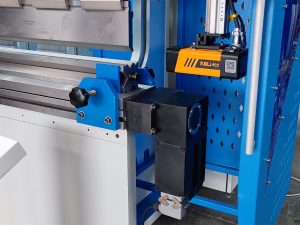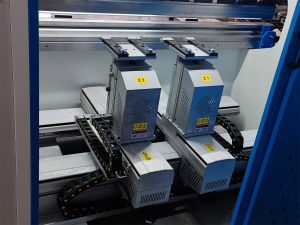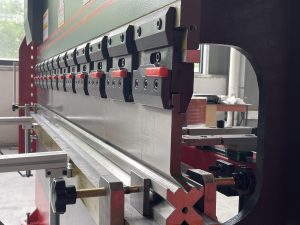Welcome to the world of hydraulic presses, where immense force converges with precision to shape metals through the art of drawing. In this article, we embark on a quest to demystify the energy consumption involved in this intricate process. From understanding the underlying principles to exploring efficiency measures, join us on this enlightening journey!

The Hydraulic Press: Powerhouse of Force
At the heart of the drawing process lies the hydraulic press, a robust and versatile machine that harnesses the power of hydraulic fluid to generate immense force. This force is applied to a metal workpiece, causing it to deform and transform into the desired shape, such as tubes, rods, or wire. As the press exerts this force, it is important to investigate the energy consumption associated with the various components and operations.
The Role of Electric Motors
Electric motors play a vital role in driving the hydraulic press, converting electrical energy into mechanical energy to power the hydraulic system. Understanding the power rating and efficiency of these motors is crucial for gauging energy consumption. High-efficiency motors, with advanced designs and improved electrical characteristics, offer energy savings compared to older, less efficient models. Efforts to upgrade motors and optimize their performance contribute to reducing overall energy consumption.
Minimizing Friction and Leakage
Efficiency considerations extend beyond the motors and encompass the entire hydraulic system. Minimizing friction and leakage within the system can significantly impact energy consumption. Well-maintained seals, carefully selected fluid properties, and proper lubrication help decrease friction losses. Regular inspections and repairs ensure that hydraulic components operate at peak efficiency. By keeping leakage to a minimum, energy losses can be mitigated, leading to improved overall performance.

Monitoring and Control Systems
Modern hydraulic presses are equipped with sophisticated monitoring and control systems to optimize energy consumption. These systems employ sensors and actuators to gather real-time data on variables such as pressure, flow rate, and temperature. By analyzing this data, operators can fine-tune the press parameters to reduce energy waste during operation. Automatic shutdown or standby modes can be programmed to minimize energy consumption during idle times, further enhancing efficiency.
Innovations in Regenerative Systems and Capacitors
Advancements in technology have introduced regenerative systems that harness and store energy during the deceleration phase of the press. This stored energy can then be reused during subsequent cycles, reducing the overall energy demand. Capacitors are also employed as energy reservoirs, compensating for power fluctuations and supplying additional energy when required. These innovative solutions contribute to minimizing energy losses and optimizing the drawing process.

The Path to Sustainability
As industries embrace a more sustainable future, the hydraulic press sector is no exception. Energy consumption optimization goes hand in hand with reducing the carbon footprint. Adopting renewable energy sources, such as solar or wind power, to generate electricity for hydraulic press operations can lead to substantial environmental benefits. Additionally, integrating energy-efficient components and implementing recycling and waste reduction measures contribute to a greener and more sustainable drawing process.
The Final Verdict
Understanding the energy consumption of hydraulic presses during the drawing process unveils a world of possibilities for improved efficiency and sustainability. From the powerhouses of electric motors to minimizing friction and leakage, monitoring systems, and innovative solutions like regenerative systems and capacitors, each element plays a vital role in optimizing energy consumption. By adopting these strategies and embracing sustainable practices, the hydraulic press industry can forge ahead towards a greener future.
As a trusted exporter and manufacturer of hydraulic press brakes, we are dedicated to providing reliable service and quality products. We understand the importance of energy efficiency in the drawing process and have developed hydraulic presses that optimize energy consumption without compromising performance. Our commitment to delivering the highest standards of service and quality sets us apart as a reliable partner in the industry. We invite you to visit our website and explore our range of hydraulic press brakes, where you can experience the reliability, service, and quality that make us a trusted choice.

